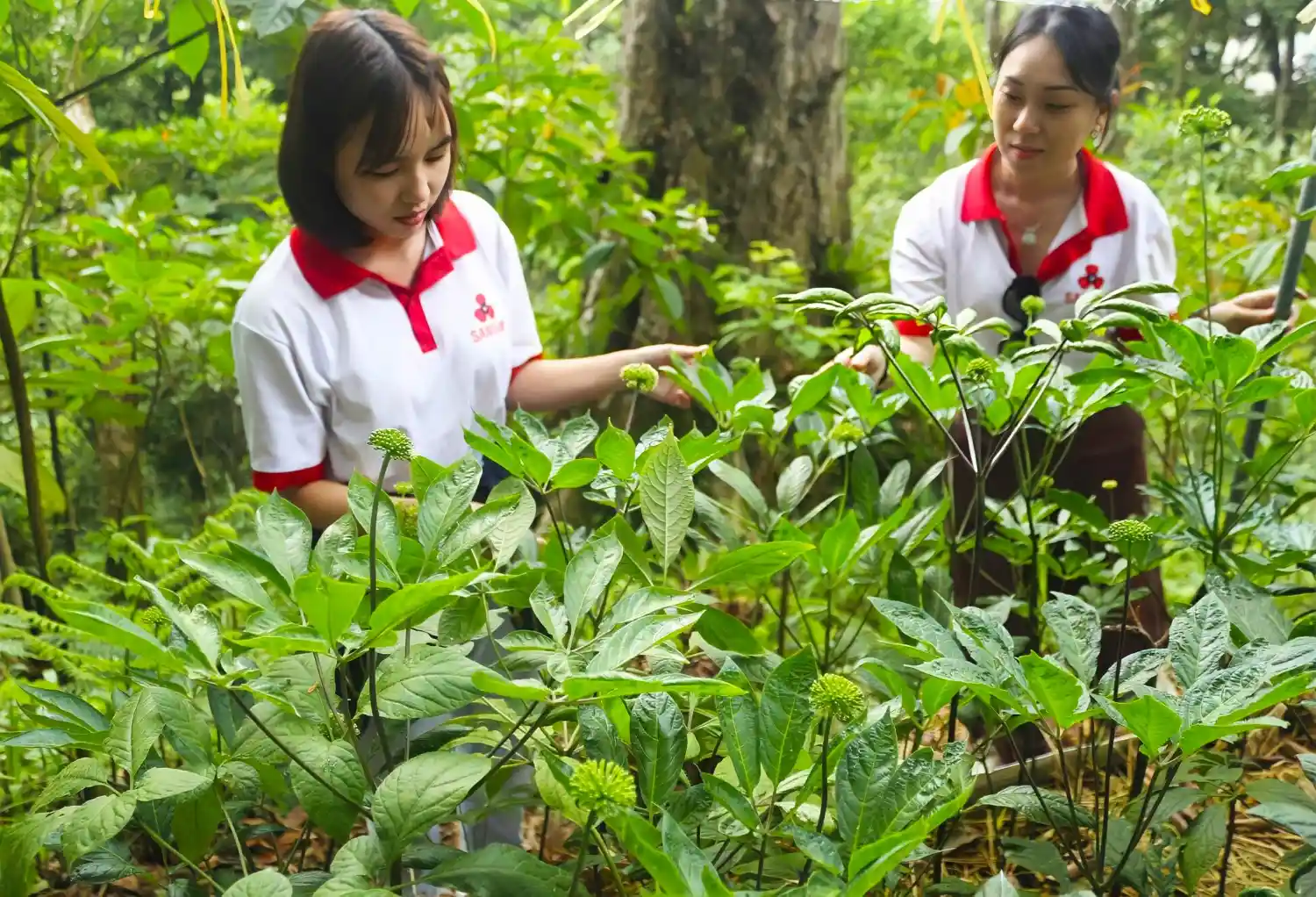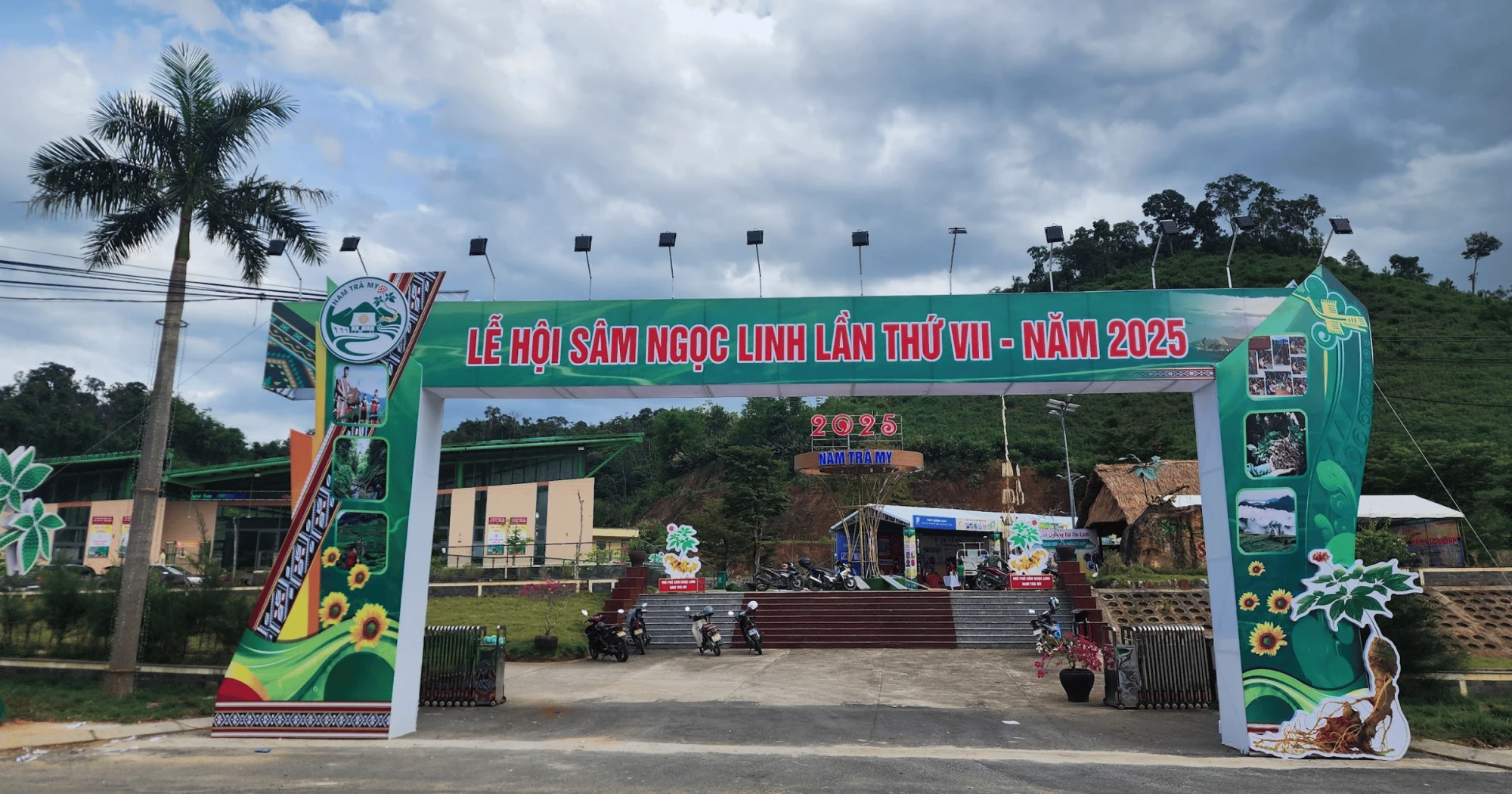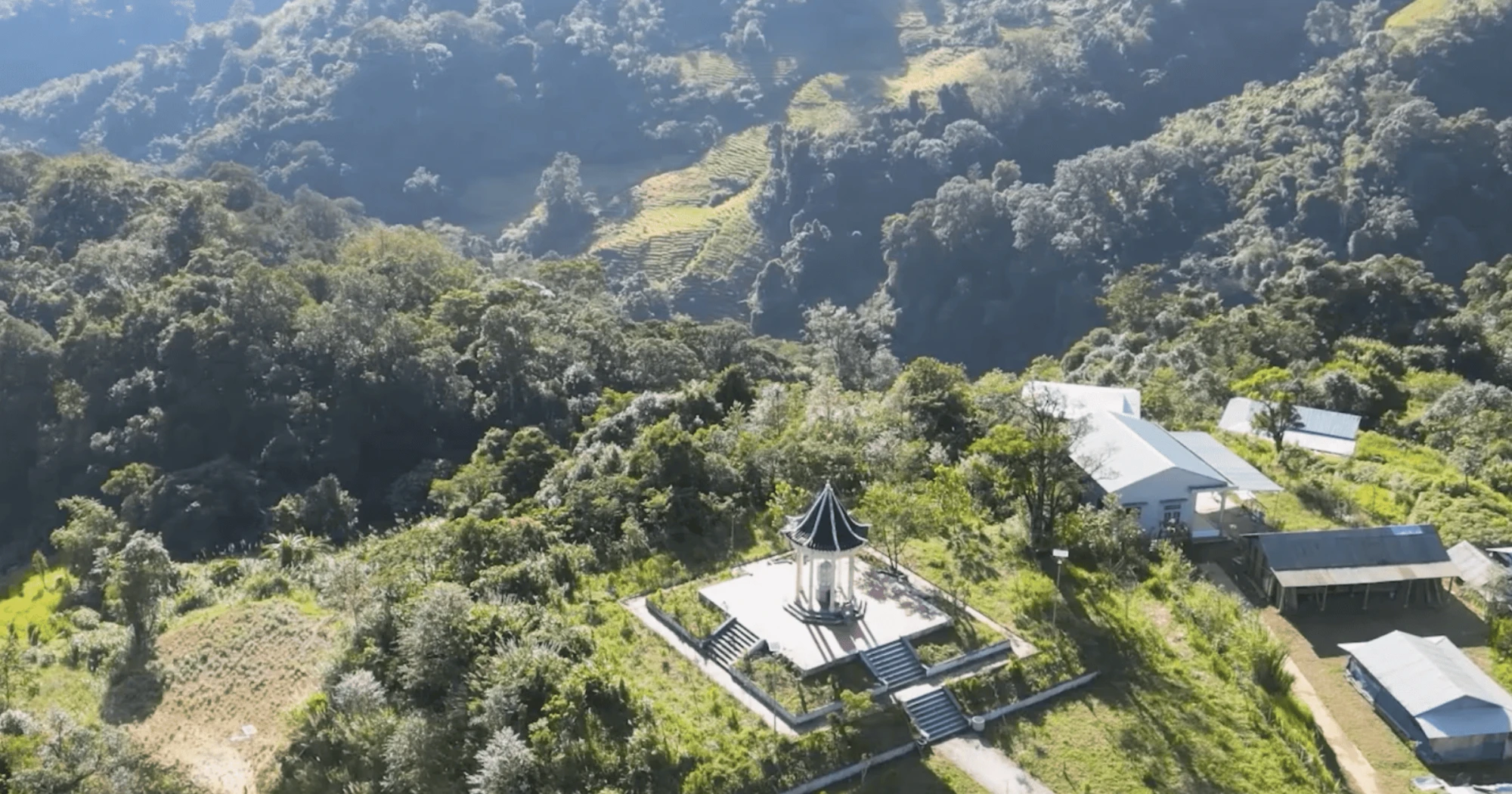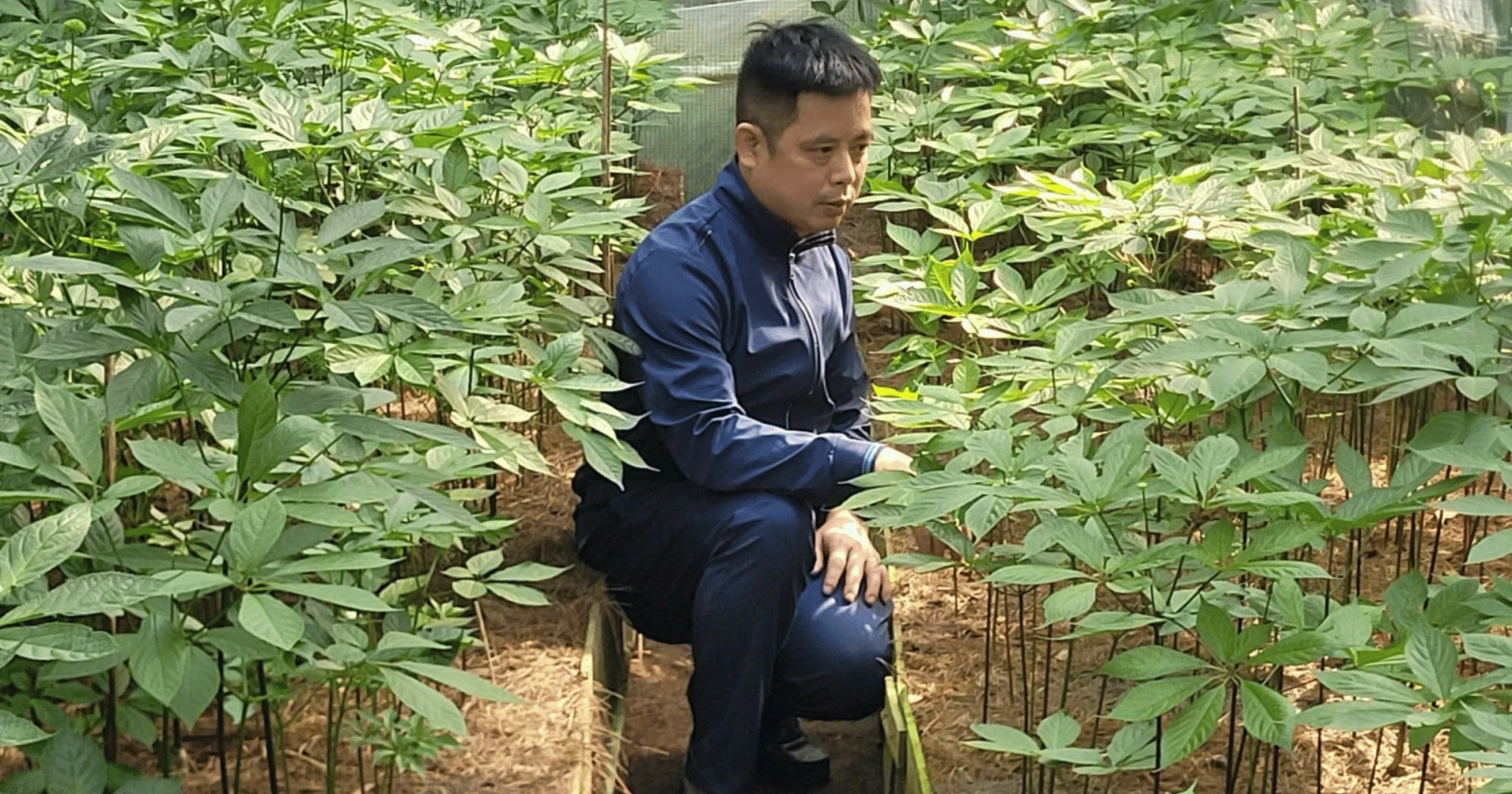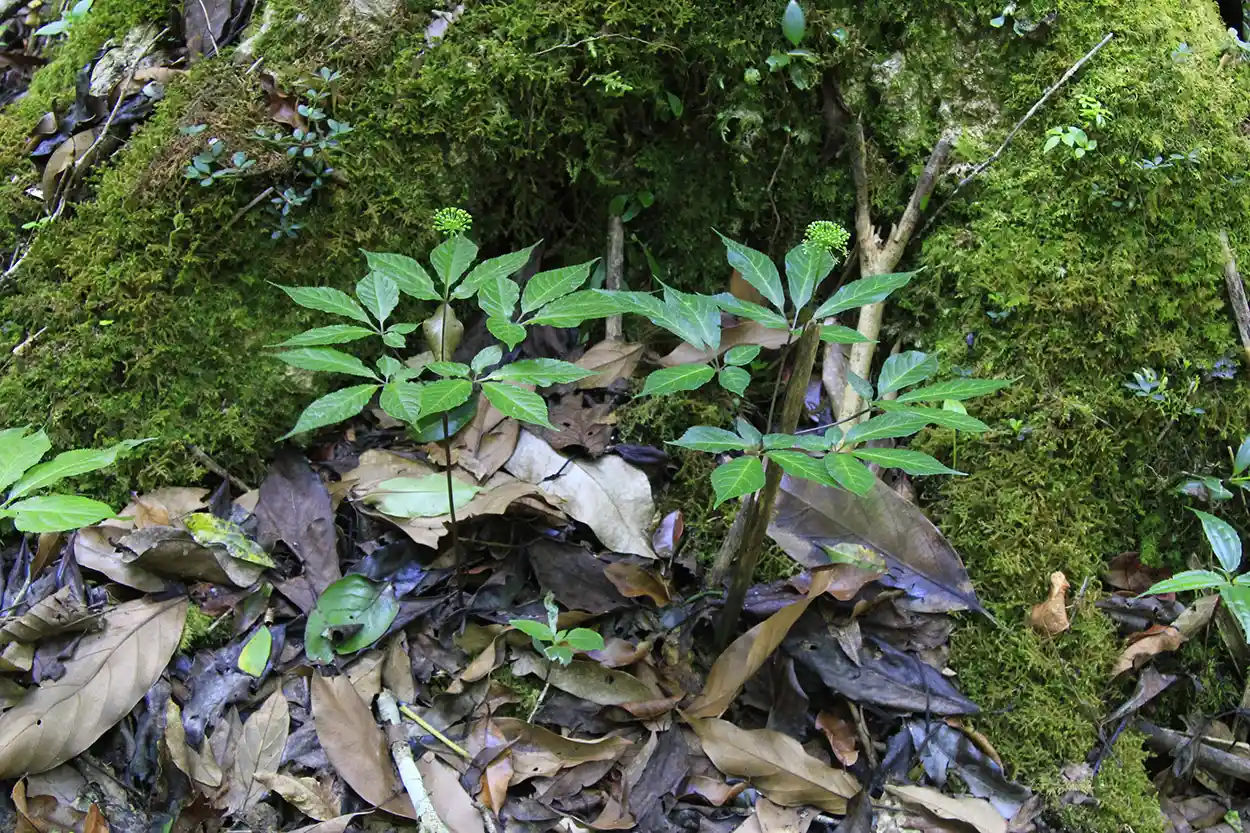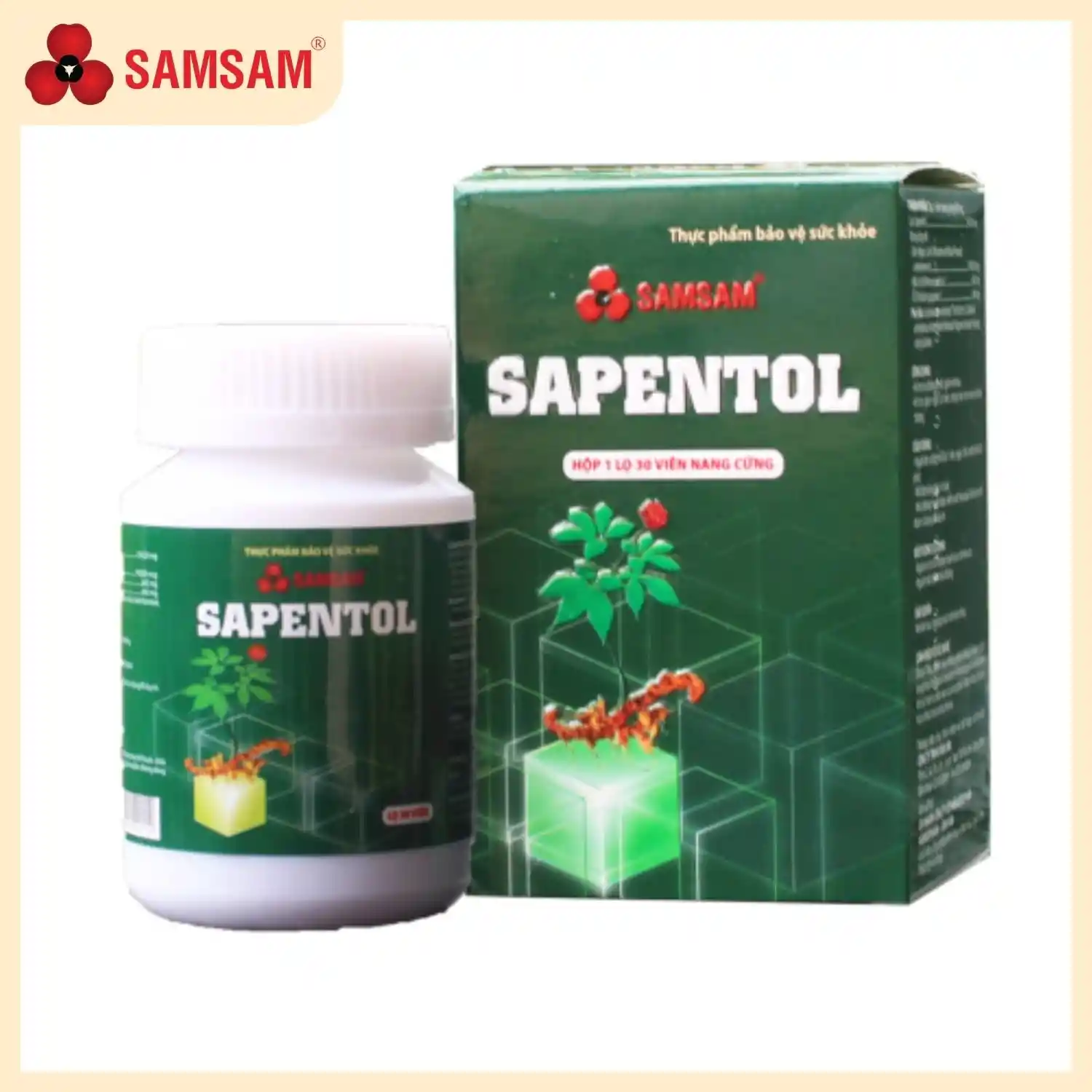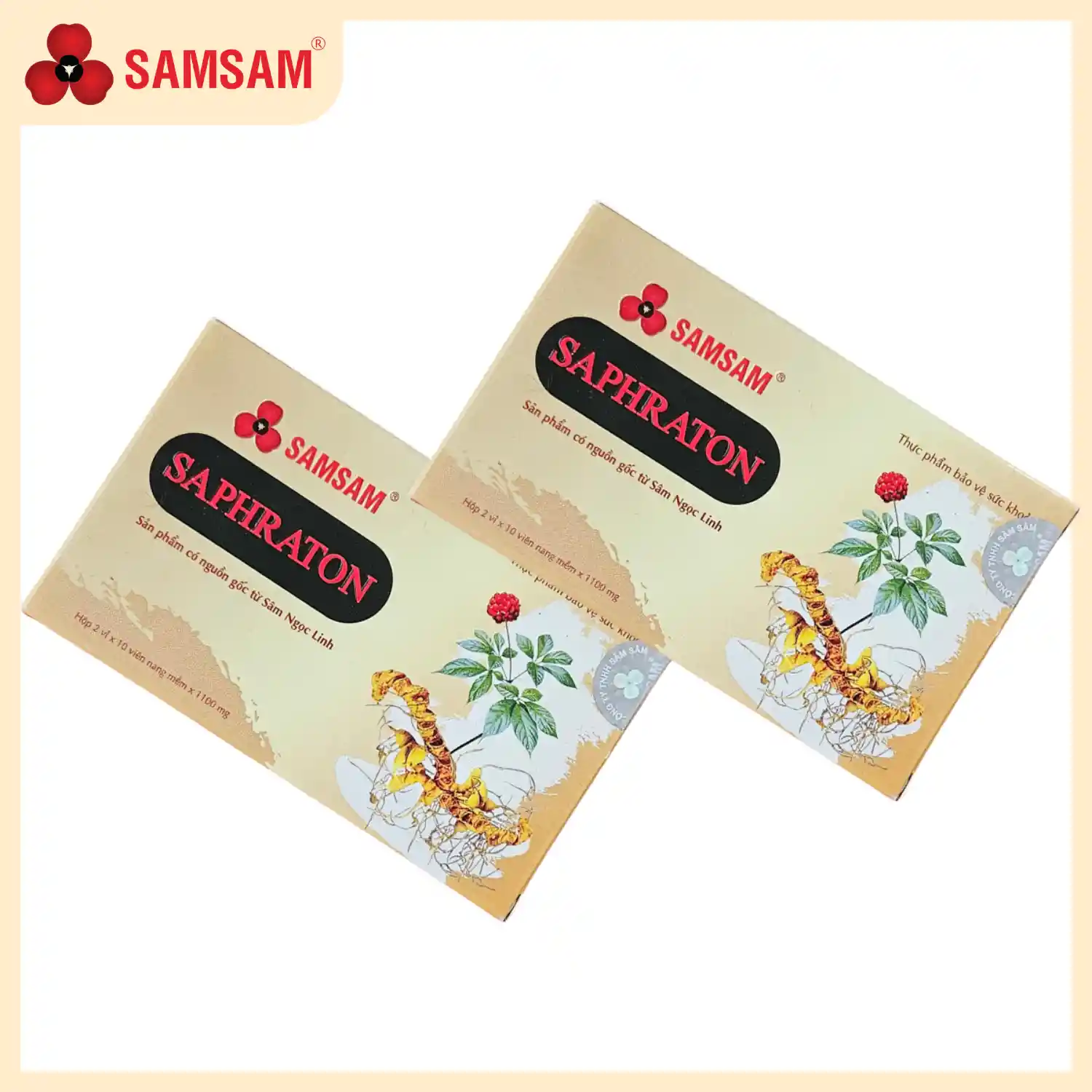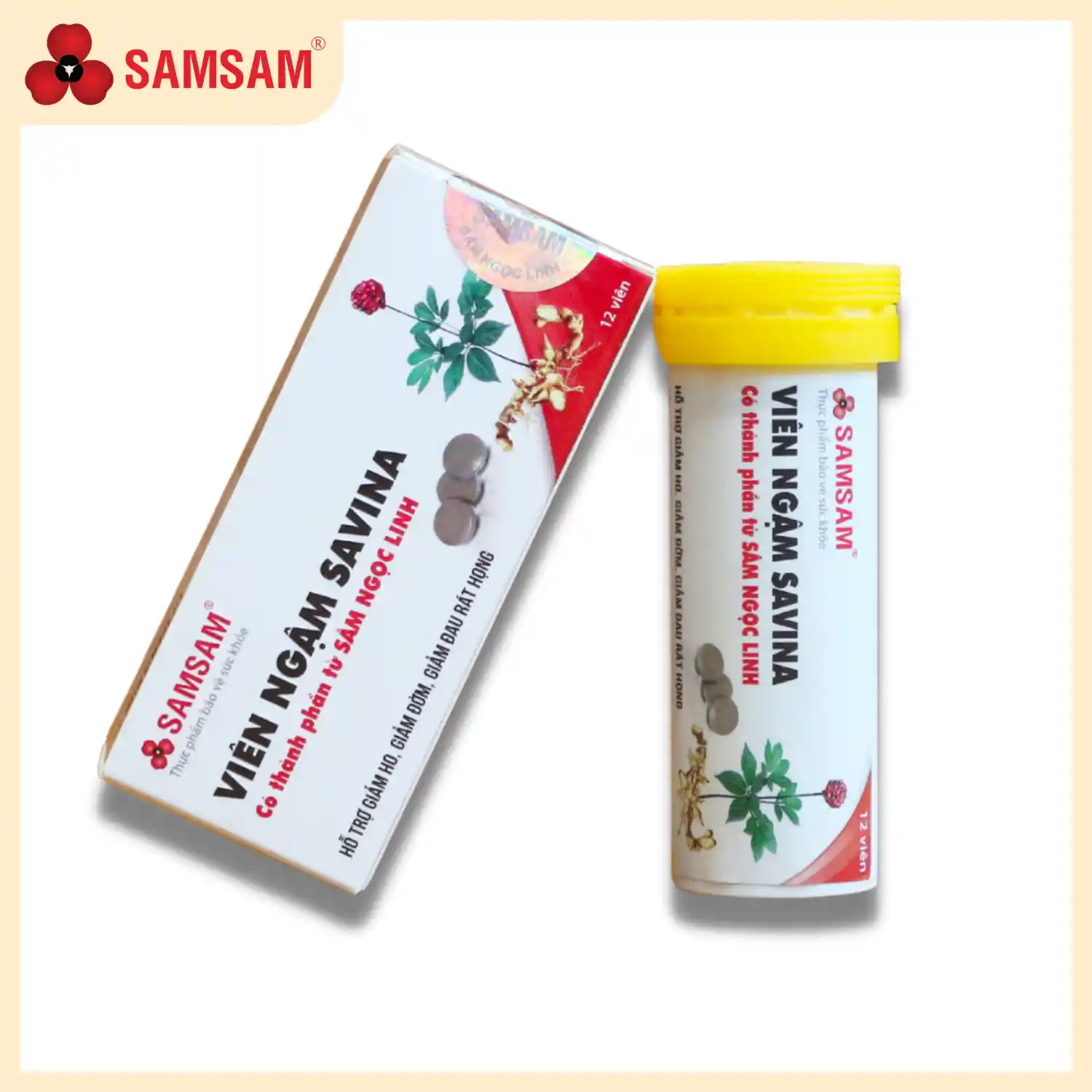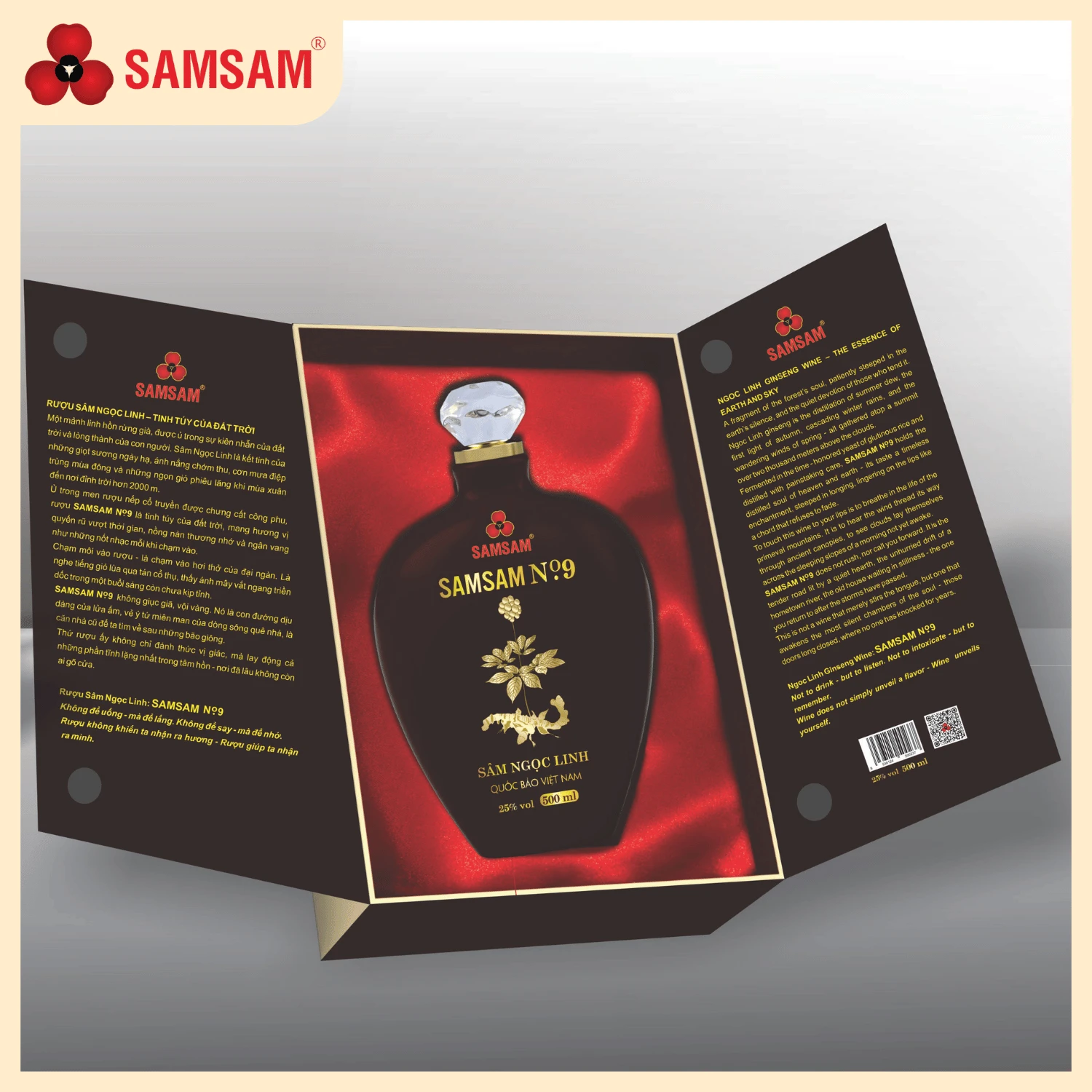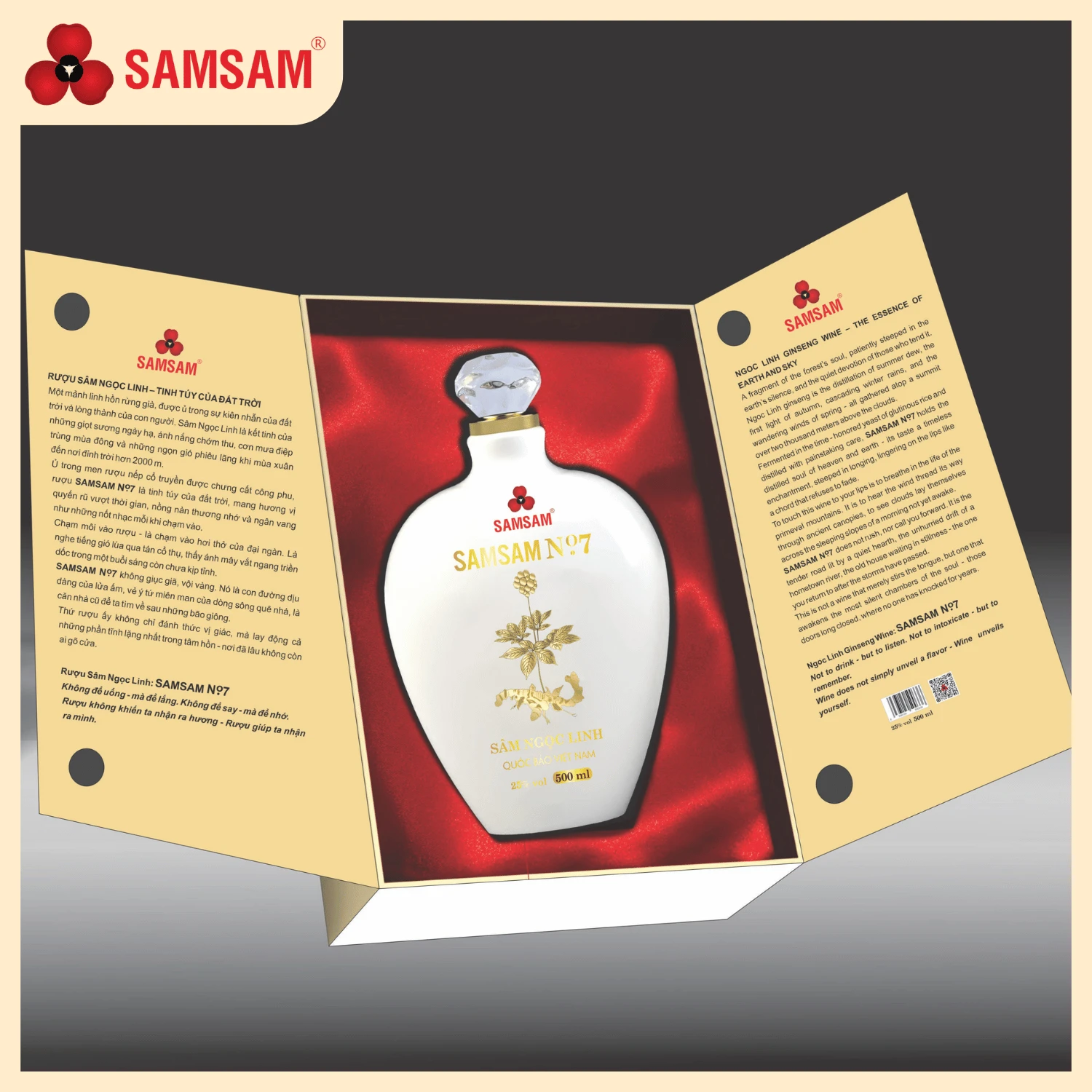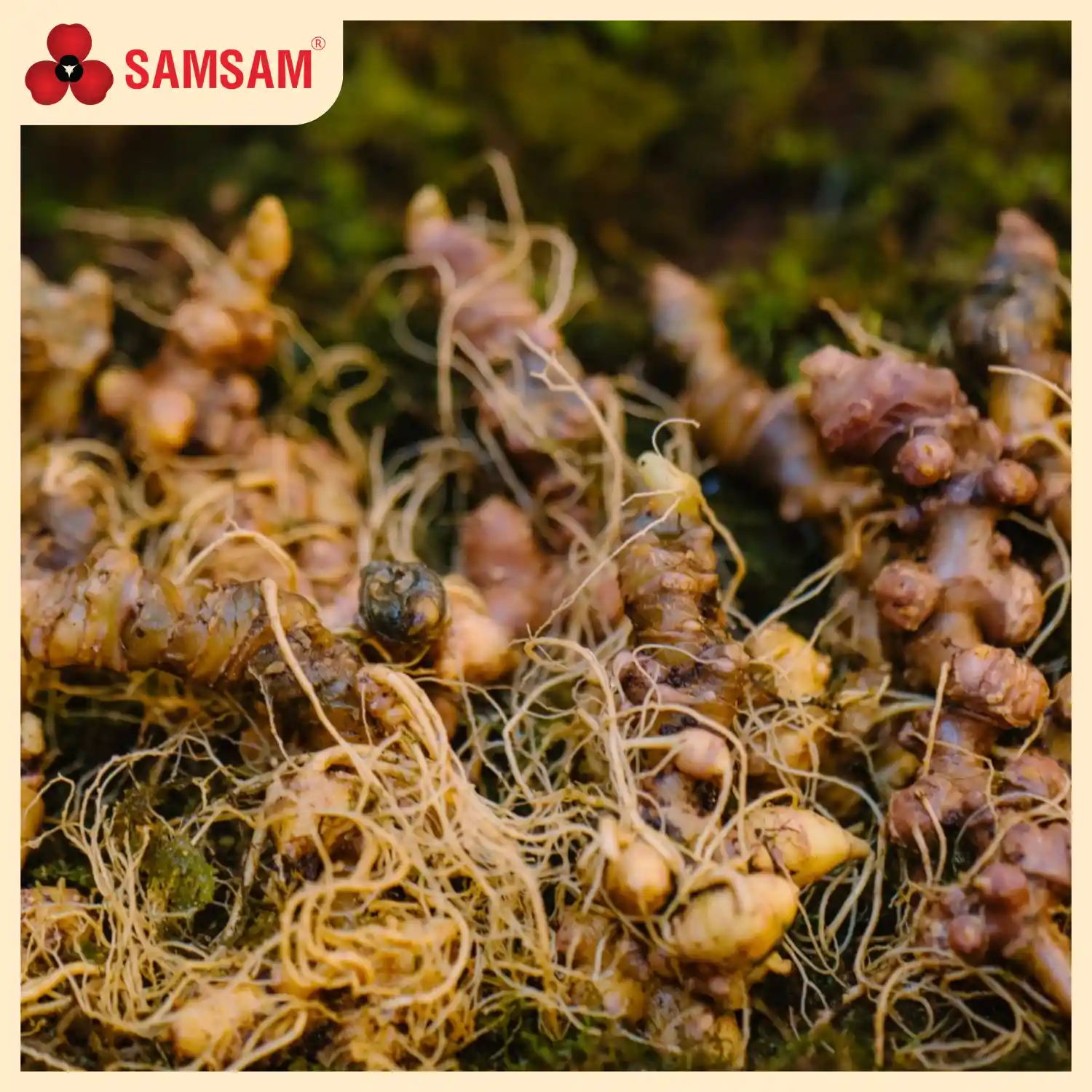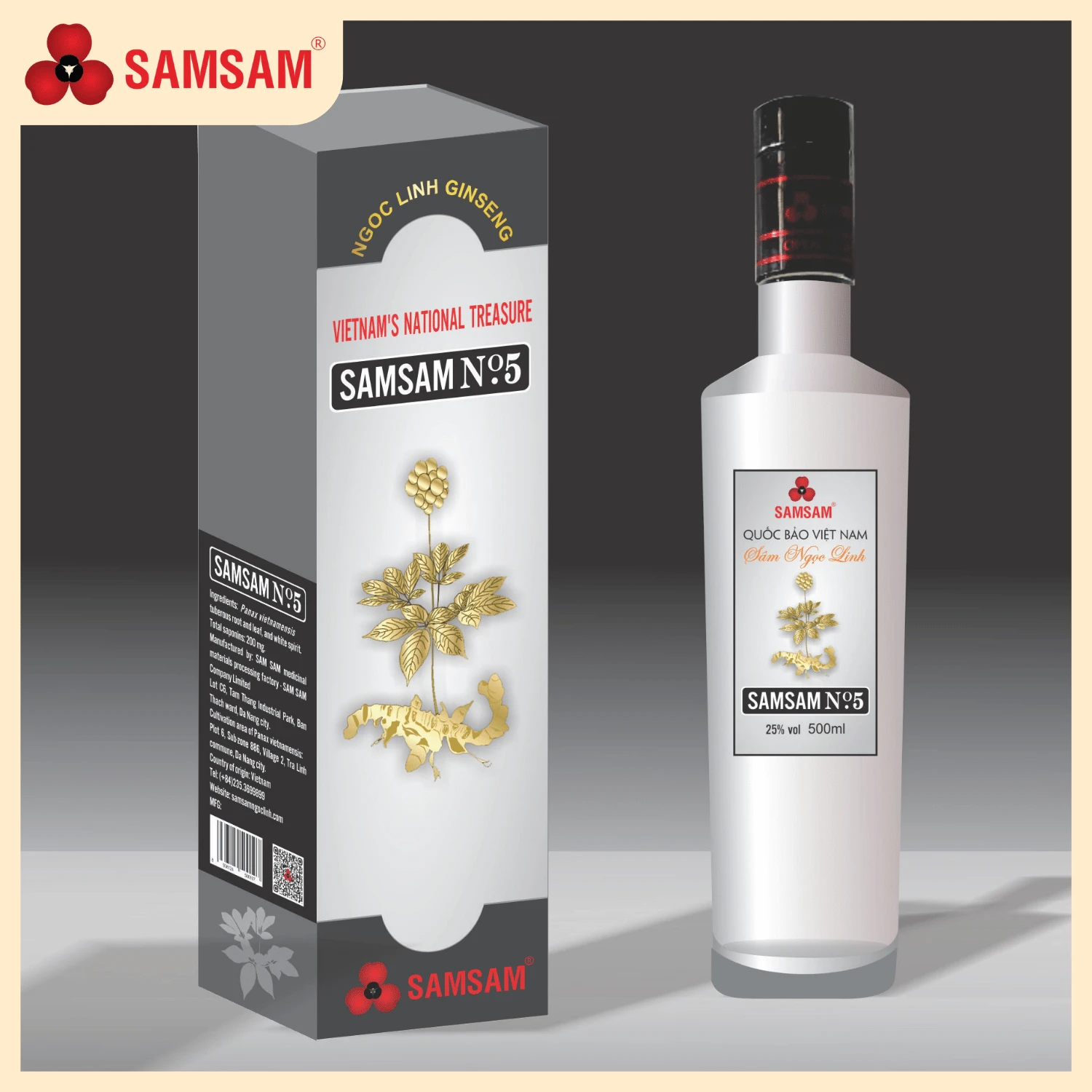Ngoc Linh ginseng (Vietnamese ginseng) is currently distributed in a narrow ecological area, around the top of Ngoc Linh mountain, under the canopy of primary forests in the territory of 3 districts: Nam Tra My (Quang Nam), Dak Glei and Tu Mo Rong (Kon Tum). The growth and development area of Ngoc Linh ginseng is located entirely on the Ngoc Linh mountain range, with geographical coordinates ranging from 14° 44′ to 15° 13′ North latitude and from 107° 45′ to 108° 10′ East longitude, this is also the southernmost limit (within 15° North latitude) of the distribution map of the genus Panax L. in the world.
The Vietnamese ginseng growing area (Ngoc Linh ginseng) has the following specific climate characteristics:
The average annual rainfall of the ginseng region is from 2,600 – 3,200mm. The average annual temperature ranges from 15 -18.50c. The average annual evaporation is from 670 – 770mm. The average humidity is from 85.5 – 87.5%.
Ngoc Linh Ginseng growing areas are mostly located in protective forest belts with a coverage density of over 80%. In addition, Ngoc Linh Ginseng growing areas also have the following soil characteristics:
Both wild and cultivated ginseng only grow and develop under the canopy of primary forests, where there is thick humus. Due to the ecological characteristics of Ngoc Linh ginseng, it only grows on the humus layer and not underground, so areas with thick humus layers are ideal conditions for ginseng to grow and develop. Under the canopy of primary forests, the soil moisture conditions are also suitable for ginseng to grow and develop.
The Vietnamese ginseng region (Ngoc Linh ginseng) is mainly distributed in the mountainous communes of Kon Tum and Quang Nam provinces. Ngoc Linh mountain range is the second highest mountain range in Vietnam, part of the Southern Truong Son range. This mountain range is located on the northern plateau of the Central Highlands, Vietnam, in the provinces of Kon Tum, Quang Nam, Quang Ngai, Gia Lai. This mountain range runs in the Northwest – Southeast direction starting with Ngok Lum Heo mountain, Muong Hoong mountain, Ngoc Linh, Ngoc Krinh, Ngok Tem, Ngok Roo with an average height of about 800 – 2,600 m. The highest peaks are Ngoc Linh peak (2,598 m), Ngok Tu Mang (1,994 m), Ngok Puok (2,370 m), Ngok Pang (2,378 m). Ngoc Linh mountain range has strong separation, steep slopes, and many narrow and deep valleys.
Based on distribution characteristics, Ngoc Linh ginseng lives from an altitude of 1,400 m or higher, where forest cover density is over 80%, ginseng grows and develops well.
+ River and hydrological characteristics
Distribution area (Vietnamese ginseng) Ngoc Linh ginseng with an altitude of over 1,400 m, has a large natural forest cover system, especially the thick layer of humus which is the place to store and originate water for large rivers and streams in the region. In the ginseng growing area, there is only a system of small streams flowing into and large river systems such as: Dak Psi river basin located in Tu Mo Rong district has the largest area concentrated in the East – South of the district; including stream systems such as: Chim stream, Dak PSi stream, Dak Lay stream, Dak Ter stream, Dak Xe stream, … Dak To Kan river basin in Tu Mo Rong district is mainly in the West – South of the district. Streams in the Po Ko river basin are mainly distributed in the West – North of the district. In addition, in the area there are also upstream streams flowing to the North of Ngoc Linh mountain range into rivers such as Vu Gia, Thu Bon river in Quang Nam province, Tra Khuc river in Quang Ngai province, etc. In general, although Ngoc Linh ginseng growing area does not have large stream systems, it has a high coverage coefficient and a thick humus layer, creating a high humidity area with good water retention capacity, very suitable for the ecological requirements of Ngoc Linh ginseng.
+ Climate characteristics:
There are Northeast monsoon air masses and Southwest air masses. In addition, with the characteristics of altitude, high coverage density, etc., it has created a subtropical climate zone that is very suitable for the ecological requirements of Ngoc Linh ginseng. The climate conditions of this region have very different characteristics compared to the surrounding areas, such as: high rainfall, high humidity, low evaporation, low temperature, etc.
Rainfall regime depends on the influence of two air masses. Rainfall from May to October is due to the impact of the Southwest monsoon and from November to April of the following year is due to the direct impact of the Northeast monsoon. The Northeast slope (high mountains of Nam Tra My district, Quang Nam province) has high rainfall, with an average rainfall of 2,800 – 3,200 mm; for the Southwest slope, rainfall is lower than on the East slope with an average annual rainfall of 2,600 – 2,800 mm. The Ngoc Linh ginseng growing area has an average annual rainfall of 2,600 – 3,200 mm.
Rainfall in the year is mainly concentrated from June to September, during this time the rainfall accounts for about 65 – 70% of the total annual rainfall. The months with the lowest rainfall are December, January, February. When studying the life of ginseng, after the dormant period (after December), the plant begins to grow and from April to June the plant flowers and bears fruit, July begins to have ripe fruit and lasts until September. Thus, the distribution of rainfall in the year is relatively consistent with the growth and development periods of Ngoc Linh ginseng. At the end of October, the aerial part of Ngoc Linh ginseng gradually withers, leaves fall, leaving a scar at the top of the ginseng root and the plant begins its dormant period until the end of December, this is also the beginning of the dry season, the humus layer begins to drain, favorable for the accumulation of protoplasm in the ginseng root, not causing yellow rot disease of ginseng root caused by humidity.
Temperature:
In general, the temperature tends to decrease from South to North, from East to West, depending on the altitude, seasons of the year, etc. Although Ngoc Linh ginseng growing area is located in the tropical belt of the Northern Hemisphere, due to its distribution at an altitude of over 1,800 m, the average temperature is much lower than other areas below. The results of analysis and processing of spatial and altitude variations of the temperature factor of the stations show that the average temperature of the coldest month is below 10°C; the average temperature of the highest month is about 20°C. The total heat of the year is below 7,500°C. The temperature in the Southwest region is higher than the Northeast region, commonly from 2 – 4°C. The air temperature is lowest in December and January, and highest in April and May. The average annual temperature is about 150 – 18.5°C. December to January of the following year has the lowest temperature, averaging about 8 – 11 ° C, some years the minimum temperature fluctuates from 5.5 – 8.5 ° C. April and May have the highest temperature, averaging about 22 – 23 ° C. The average, maximum, minimum temperature standards and temperature variations of each month are all suitable for the requirements of ginseng. During the growth and development periods of ginseng, the average temperature is about 18 ° C, this is the suitable temperature threshold for ginseng. According to many studies, the suitable temperature threshold for ginseng is 20 – 23 ° C during the day and 15 – 18 ° C at night. Observation results show that the temperature range between day and night in the ginseng growing area is from 8 – 9 ° C, which is also a factor very suitable for the growth of ginseng. When compared with the ecological requirements, it can be seen that no month of the year has an average temperature greater than 23 °C, proving that the temperature factor in these regions is highly suitable for ginseng.
Humidity:
Relative humidity changes more clearly over time than space, with both daily and yearly periodic changes and year-to-year changes. Humidity in ginseng growing areas is higher than in other areas, with an average annual humidity of 86-87%, the highest month (August) reaching 94-95%. The reason is that the distribution at high altitude, high coverage density, low temperature, high rainfall, and frequent cover by humid clouds have created high humidity for this area. The average annual humidity of ginseng growing areas is about 85.5-87.5%, the difference in humidity between months is quite large, ranging from 5-7%. Relative humidity has the following extremes: maximum humidity usually occurs from July to September with a range of 89 – 94% and minimum humidity usually occurs from November to May of the following year, but reaches its lowest from February to April with a range of 77 – 82%; while in the surrounding areas, the average humidity is from 85 – 89% in the high humidity season and from 76 – 82% in the low humidity season. The period of high humidity coincides with the period of activity of the southwest monsoon in the rainy season and the period of low humidity coincides with the period of activity of the northeast monsoon in the dry season.
In general, the air humidity of the project area is quite favorable for the growth and development of ginseng. During the rainy season, the humidity increases, creating favorable conditions during the period when ginseng grows, develops stems, leaves and flowers, until
October humidity begins to decrease, which is also the period when ginseng roots develop, coinciding with the period when ginseng plants begin to enter dormancy.
Evaporation:
In the Vietnamese ginseng region (Ngoc Linh ginseng), the evaporation rate is lower than in other regions. The ginseng growing region has an average annual total evaporation rate of 670 – 800 mm, while in other regions it is lower, from 850 – 1,000 mm. Evaporation tends to decrease gradually in the East – West and South – North directions. The maximum evaporation rate is from April to June, about 75 mm, and the minimum is from August to October (< 30 mm).
The evaporation rate of the ginseng region is lower than that of other regions in the province. The average annual evaporation rate is from 670 to 770 mm. Evaporation tends to decrease gradually in the East-West and South-North directions. The maximum value of evaporation is in March and April (average 85 mm) and the minimum is in August (average 40 mm). Thus, compared to the moisture requirements needed for growth and development, the low evaporation rate of the region is a very favorable factor for increasing biomass and forming ginseng quality.
+ Botanical characteristics:
The climate of Ngoc Linh mountain range has many unique characteristics, from humid tropical climate to subtropical highland climate. In addition, Ngoc Linh mountain range has complex terrain, strong separation, many rugged high mountains and deep narrow valleys, so the flora is also very rich and includes many different species. The lowlands are mainly tropical humid evergreen closed forests. This type of forest has complex composition, dense, multi-layered forests, mainly broadleaf closed forests. The higher the altitude, the more typical the subtropical forest type with broadleaf and coniferous closed forests.
Ngoc Linh ginseng area is mainly natural forest, with evergreen broadleaf forest, bamboo and coniferous forest. This is one of the areas with many natural forests with many rare species of wood and animals, which need to be protected and exploited.
Shade is a mandatory requirement for Ngoc Linh ginseng because it is a shade-loving plant and often grows and develops under the canopy of evergreen broadleaf forests, sometimes mixed with conifers, with a coverage of over 80%. Through documents and investigation results, it is found that Ngoc Linh ginseng growing areas are mostly located in the protective forest belt (understood as primary forests) of both Kon Tum and Quang Nam provinces, and with little human influence, it has created a layer of humus under thick litter that is very suitable for the growth and development of Vietnamese ginseng (Ngoc Linh ginseng).

